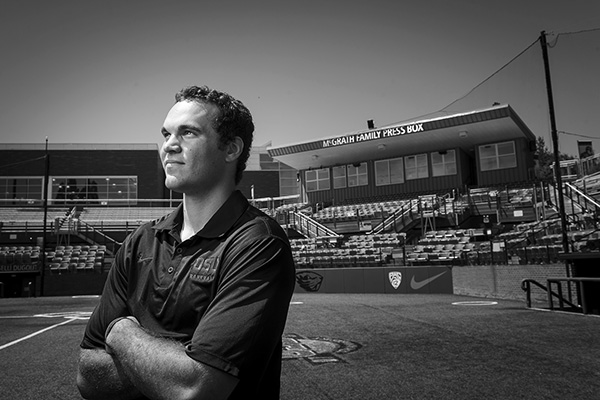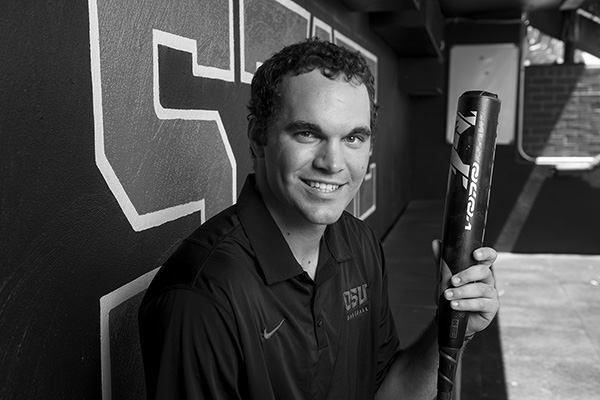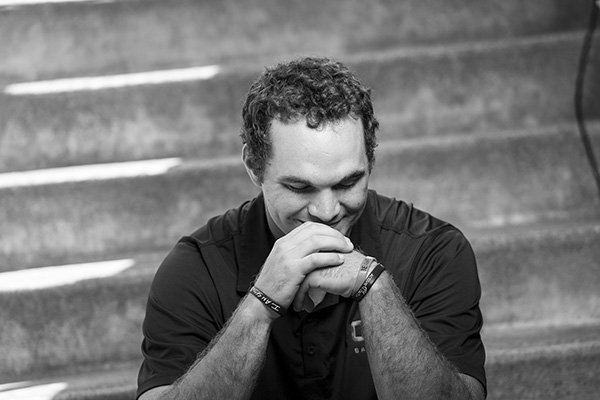W
hen Oregon State Baseball made a trip to the College World Series in 2005, it ignited a spark in an 11-year-old Little League player that couldn’t be extinguished.
Jack Anderson attended the Regional game at Goss Stadium with his family. After the win, he met Jacoby Ellsbury, later a two-time World Series champion with the New York Yankees. Anderson asked the star center-fielder if he could have his sweatband. But Ellsbury had wanted to keep it for good luck in the Super-Regional. Anderson looked for Ellsbury after those games, but couldn’t find him in the excitement. He wasn’t disappointed.
“It was the coolest moment for me,” Anderson recalled. “I was like one of those little kids at the games now, asking for an autograph.”
After Oregon State won back-to-back College World Series titles in 2006 and ’07, Anderson never dreamed of playing anywhere else.
“I always thought that maybe I could be a Beaver one day,” Anderson said. “I just didn’t know how difficult it would be.”
In baseball, there’s a greater chance of failure than success when a player steps to the plate, no matter how great he is.
“You get out more often than you get hits,” Anderson said. “You can’t be too hard on yourself when it happens.”
When Anderson first came to Oregon State and tried to make the team as a walk-on, he didn’t succeed. But he didn’t give up. Failure can be your teacher or the undertaker. The key is to stay in the present. Focus on one pitch at a time. With grit, determination and pride, Anderson fought his way onto the 35-man roster and eventually into the regular lineup of a team with the most conference wins in Pac-12 history.
Anderson grew up in Lake Oswego where he excelled as a three-sport athlete in high school. Corvallis is his second home. His grandparents live here, and his parents met while attending Oregon State.
Anderson caught the attention of Assistant Baseball Coach Pat Bailey his sophomore year. Bailey let him know they were interested. As the 2014 recruiting class took shape, Bailey informed Anderson that there wouldn’t be a scholarship offered to play outfield. But he was invited to walk-on.
“I knew I would have to fight for my spot,” Anderson said.
Other programs were interested in him.
“Oregon State Baseball was the top of the mountain for me,” he said.
Except for ice-skating, horseback riding and swimming, sports have always come easy for Anderson. But when he reported for fall baseball his freshman year, he may as well have been trying to ride a horse underwater in hockey gear.
He wasn’t ready for this level of play.
“I didn’t know what I was getting myself into,” he said. “I was overwhelmed.”
He played hard, knowing the next day he might get cut. He wasn’t hitting well. But he tried to keep a positive attitude.
“I was just trying to make a statement,” Anderson said. “The biggest thing was to get noticed so I could have another shot for the next year.”
Being redshirted in baseball presents greater challenges than in other sports. Once the season starts, players can’t practice with the team or work with the coaches.
Making the team had as much to do with things beyond his control as it would with what he could do to improve himself on his own. The Major League Baseball draft and recruiting would determine if a position would be open.
At a crossroads, he asked himself, do I really want to do this?
“I had to look inside and figure out what’s best for me,” he said.
Anderson chose to pursue a degree in kinesiology with plans to become a physical therapist. No matter what happened with baseball, he knew he would stay at Oregon State.




